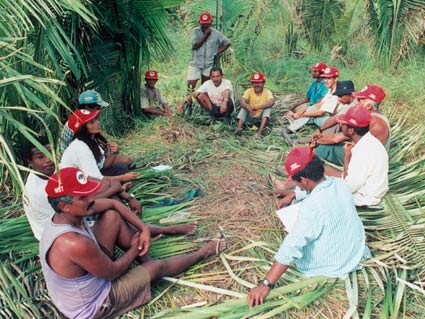Hans Ulrich Obrist: The last time we met was with Rem Koolhaas in 2001, and we spoke about what could be called your “city projects.” What are you working on related to this subject at the moment?
Antonio Negri: I can start by saying that while discussing the concept of the multitude, Michael Hardt and I found ourselves facing the question of the city, which we brought up as part of the question of the territorialization of the multitude, the space in which the multitude deploys itself. To be honest, I think that while a number of problems started to clear up after we wrote Multitude, others remained in the shadow, like this fundamental question of space. For example, we are very interested in this problem of the multitude’s temporality, that is, of transformative moments and raising consciousness, or the problems that arise the moment we think about what it means to “make” multitude, to construct it as a singularity that tends towards shared, common projects. But the big problem we have yet to consider concerns space. Because we still require a place in which this multitude will exist—not only a network through which it communicates, but also the power to decide its living conditions. This power to decide plays a role in developing a relationship between the multitude and state structures or institutions, and from a negative perspective this means an uproar; from a constructive perspective it means revolution. Now we could say that today this space is the contemporary metropolis. Half of the world’s population, maybe more, now lives in cities. The population itself, we could say, is a refugee in these cities. In fact, we may now have one to two thirds of the world’s population living in cities of over one million inhabitants.
HUO: And these numbers rise every year!
AN: That’s right! And if the question of the metropolis is central, then in my opinion it is because there is a structure of the common that is specific to it. This structure could be described as the tension that exists between the demand for services on the one hand, and the withholding of these services, or the refusal to consent to this demand, on the other. The refusal endangers the demand, and the claims made to it. And this demand becomes more and more important. I actually believe that two processes are currently underway. The first is a definitive neutralization of the traditional working class, which has allowed for the distinct working-class space—the factory—to be destroyed. But it goes beyond this to something more general, because we could also say that this disqualification has marked the disappearance of the productive space as a clearly defined one. The second process concerns the illegal reconstruction of urban space, the spaces not controlled by anyone, that are constituted by successive waves of immigration and by extremely profound cultural mixes. And all this produces two vast, enormous spaces, where all the energy of work, of construction, of sociality and solidarity, is centered.
HUO: So we could say that these are two parallel movements.
AN: Yes, because they are both intertwined with forms of biopolitical control. It is clear that they are not simply processes of controlling the conditions or the organization of work, but rather of transforming living conditions in such a way that only work and its organization become important. So when we look at the metropolis, we find ourselves facing a dialectical movement unique to our time. But it is dialectic in a unique sense, because, in truth, these are processes that lead nowhere. These changes are made regardless of any communal frame. Each time we arrive in places shaped by these processes, we experience a sort of vertigo. I was recently in Caracas, where in a city of about seven or eight million people you have between seven and nine hundred thousand living in what we could call neighborhoods, or “defined” spaces, whereas about six or seven million people live in totally chaotic conditions.
HUO: And it isn’t even clear exactly how many people there are…
AN: Yes, we don’t even have a precise figure! When flying over the city, I was absolutely struck by seeing the city everywhere, absolutely everywhere! Meaning that from about 1200 meters above the ground, you can see only the city, and nothing but the city! Everything is occupied! And what’s more, the space is taken up by something that is totally wild, completely uncontrolled!
HUO: Could we describe this in terms of “self-organization”? Of a kind of development that evades all forms of planning?
AN: Yes, it’s completely self-organized. And in Brazil it’s the exact same thing.
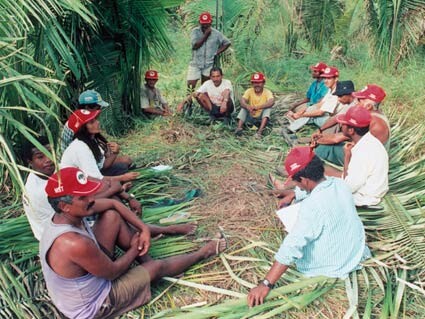

HUO: You mentioned earlier that you have been traveling extensively in South America.
AN: Yes, I’ve traveled there especially often in the past couple of years. I must say that I completely agree with Niall Ferguson, who has said that the new political context the Bush administration was responding to was not one of large-scale terrorism engendered by the ongoing conflict in the Middle East—a situation that they themselves created—but the fact that, for the first time since the assertion of the Monroe Doctrine in 1823 Latin America was completely independent. And now, if Mexico votes Left, it will no longer be only Latin America, but Latin America and Mexico! I wrote a little book about this that was published in Brazil and in Argentina, called Glob-AL, where the A and L stand for America Latina. In this book, I consider the crisis of the ideologies of subordination and dependence, which were classic themes in the traditional theories of the Latin American Left, and I note that the goal has now become to theorize the interdependence, already constituted, of this new continental front. And all this goes hand in hand with the other emerging position, which considers Bush’s or the United States’ coup d’état to have failed. The next horizon we will have to prepare for is that of this continental pluralism—one that is extremely varied and passionate, but still poses a small problem for me, which is that we have yet to understand this problem in Europe. And I find this fact regrettable!
HUO: How do you see Europe in opposition?
AN: I don’t know exactly—I’m still consumed by all that happens there, and I haven’t reflected on this question properly. But if we return to this question of the metropolis, we can see that we’ll have to start by defining it as the place where the transformation of capitalism has, in fact, ruined its own tradition, in the sense that there is no longer any difference between industrial profit, real estate surplus, and financial structures. At the same time, the city has become a full-fledged productive element—and the metropolis even more so. We see that even the most intelligent men have always considered the city to be a positive externality, meaning that we consider the city to have established conditions in which industrial operations and processes could be organized, developed, and extended. But today the city, and the metropolis in particular, have become directly productive. And what exactly does this production consist of? I would say that it consists of the movement of people—it is in the construction of urban cooperation, in the liberty and the imagination of people who define and provoke it. Look at Brazil. They say “But there is so much misery…” And of course, it’s true! But I would respond, “Then go look what is in that misery.” Because there is an incredible capacity for creation in that misery, in those favelas. Music, human connections, and, of course, at times, deadly connections as well. But there is an enormous creativity that produces new things, and that creativity does not come without negative aspects. But the problem of murder and crime, and more generally the problem posed by the fact that certain expressions of this wild creativity are dangerous, is evidently the problem of order and disorder. And I never thought that this multitude could exist without order. Make no mistake: I have never been an anarchist.
HUO: Yes, we spoke about this the other day, when I mentioned certain urbanists who have reclaimed anarchist thought, and you said that you do not support anarchism in the cities under any terms.
AN: I am not an anarchist from any standpoint, regardless of the situation we find ourselves in. Based on forms of self-organization that are becoming more and more collective, I think there is a “common” that grows stronger and stronger. We always have to create institutions! But creating institutions also means creating forms of cities, because an institution is not a metaphysical representation or an ideal archetype! It is among other, concrete forms that the city has to be constructed, that the metropolis can constitute the common. And it goes without saying that I am not only speaking here of buildings! There are, of course, buildings, but there is also communication—the lines, the spaces, and so forth. Creating an institution means creating a public space.
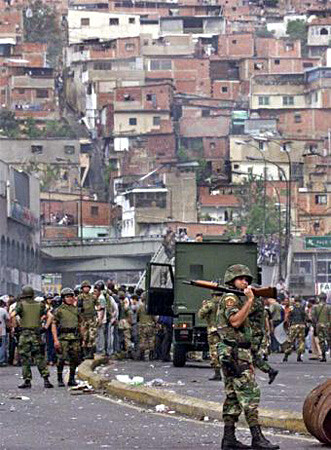

HUO: Speaking of the nature of this public space, in Multitude you describe the ongoing obliteration of the notion of “exteriority,” which also seems to hint at the disappearance of the idea of a single center. But how is this applied concretely in the city? It seems to me that it is no longer a question of center and periphery…
AN: Well, we need to pay attention to this problem. It’s true that there is no longer a center, but it is also true that there is what we can call a “deviant” center. This, for example, is the American center that raises its head in times that are more and more aberrant. I have a lot of respect and sympathy for the democratic tradition of the United States, which is something very profound and something I am very fond of. Still, we can no longer ignore the harmful effects that the conservative and religious culture in the United States has brought about. It’s a very dramatic change, and its disastrous effect has been to isolate the libertarian experience of American culture from any form of global consciousness and even from its own capacity to intervene in the world while respecting people’s liberty. The export of democracy has been transformed into a new form of imperialism that has surpassed anything we could imagine! What’s more, it has produced a kind of imperialism that has been revealed to work against the interests of capitalism, which it was supposed to serve. That is the absurdity of the situation. So the big question is not about what we can do in a world that no longer has a center, but about knowing how the struggles for liberation—the liberation of people, anti-colonialism, anti-capitalism—and how the movement of the multitude, as the fundamental thing to which all other forms of struggle subordinate themselves, can redirect the processes of communication and rebellion. From this point of view I remain a dedicated Zapatista! There are ways in which the claims—the forms of organization and the institutional forms—will build themselves. Today there are still campaigns around this, and we have to lead these campaigns! It’s very clear, particularly here in France with the problem of the banlieues, and the problem of the European suburbs in general. These are problems that we are going to have to face very soon. Next year, I am thinking of transforming the seminar I teach at the Collège International de Philosophie into a sort of “nomad seminar” that will circulate among Parisian banlieues.
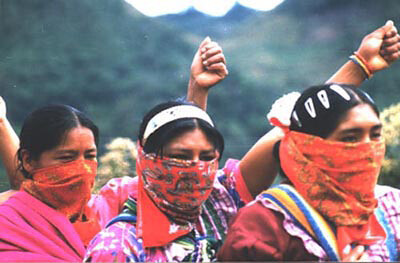

HUO: So the seminar will be delocalized to the suburbs…
AN: Yes, yes! To Saint-Denis, Evry, Nanterre, all those places. And it will respond to connections with the groups of people who work there. But it’s not only there that the problem of the metropolis will become apparent, because as we speak of the metropolis and its problems, as we speak of the suburbs, the most surprising thing is the total lack of discourse. You saw what happened after the riots in France in 2006: once again, we talk a lot and say nothing. And I must say in particular that left-wing thought has not differed much from that on the Right. The right wing claims that it is not its role or aim to search for alternatives. It is there because it wants to maintain order, so we shouldn’t expect anything else from it. Whereas the Left…
HUO: Yes, I was in Paris then, and like everyone, I think, I was amazed by the deafening silence of the Left…
AN: That’s it, they are content to remain silent. But how will any connection between this multitude and the new democratic project be established without the idea that things need to be built from the bottom up? This movement has to come from the bottom. Because with the riots we really touched the soft underbelly of all the contradictions in our society—which is essentially Fordist, but as a model this is currently undergoing a serious crisis, because it did not succeed in allowing the new generations to play a role in democracy. They called people from around the world to work in their factories, but once the factories started to close down, they found themselves with ghettos on their hands. And they had neither the imagination nor the ability to place all these people into vibrant circulation; they did not know how to use all the potential creativity that was there. They constantly speak of a “decline,” but the only decline I see is that of their own inventiveness and ability. It’s the fact that they did not succeed or that they did not even want to take the elites from those countries and place them into real circulation. And now we need to think about how to use this metamorphosis that the political powers up to now have not known how to engage productively with. It’s a metamorphosis that finds its outlet in racism, that now has to face the problem of violence, apartheid, and reactionary Islamists. But I believe that all these are secondary to the fundamental problem of how to find ways of recreating an authentic democratic circulation and free movement.
HUO: Which implies the question of the transformation of work…
AN: As always. I am a Marxist, you know. I always think that social activity is the most important thing! And I believe that all the people who talk about these problems without saying this are hypocrites. Because they know very well that social activity is the real problem, and yet they do not speak of it. After this the problem of poverty and wealth, meaning, the difference between those who work and those who exploit, will remain as Machiavelli, my patron and my master, described.
HUO: Yes, we see Machiavelli here on the table…
AN: There’s a great piece here that I reread the other day, a text, Machiavelli says, “that is good to remember for all its arguments, which speak to the proclaimed equality of men.” In it we read how one of the leaders of the 1300 revolt, a man of the plebs, “one of the most daring and experienced, in order to animate the rest,” declared:
Strip us naked, and we shall all be found alike. Dress us in their clothing, and they in ours, we shall appear noble, they ignoble—for poverty and riches make all the difference.
And it concludes with mistrust of the political game:
Small crimes are chastised, but great and serious ones rewarded … We have no business to think about conscience; for when, like us, men have to fear hunger, and imprisonment, or death, the fear of hell neither can nor ought to have any influence upon them. If you only notice human proceedings, you may observe that all who attain great power and riches, make use of either force or fraud; and what they have acquired either by deceit or violence, in order to conceal the disgraceful methods of attainment, they endeavor to sanctify with the false title of honest gains. Those who either from imprudence or want of sagacity avoid doing so, are always overwhelmed with servitude and poverty; for faithful servants are always servants, and honest men are always poor; nor do any ever escape from servitude but the bold and faithless, or from poverty, but the rapacious and fraudulent.1
You see, this is Marxism! And we find almost exactly the same thing in Spinoza, and with Nietzsche, and indeed in Marx! We actually find this in the writing of all intelligent writers, this understanding of the fact that it is poverty and wealth that make the world go round. Poverty more so, it is the key, it is the salt of the earth; poverty and love are the two most important things. We will have to construct a city on poverty and love. And, in the background is this question of how we can move from poverty to wealth by passing through love. In fact, this is a question we should pose to architects.
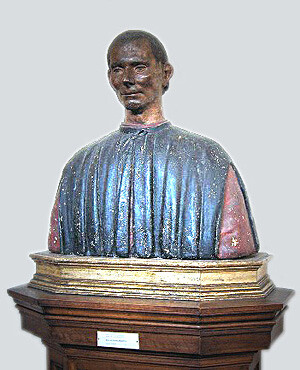

HUO: That would be an idea for a future city. But to return a little to urbanism and art—
AN: You want to talk about utopia!
HUO: Yes, but before we go back to utopia, I’d first like to speak a little about this book titled Art et Multitude. One of the things that most interested me in this book is what you say about the transformation of work. You wrote that the transformation of work was your key to reading transformations that took place in art. I would love to hear more about this.
AN: I don’t know—for me it’s clear. All of Surrealism is linked to Fordization, as is all that “rationalist art.” But I should explain what I mean by “rationalist art” such as that of the Bauhaus. Suppose that I recognize two fundamental processes: on the one hand, rationalization, and on the other, materialization. The latter gives us Picasso, and the former—Gropius! And I think the history of modern art is made like this, though I am aware that this sounds absolutely simplistic, but these are the two great foundations for my interpretation. Picasso marks the peak of a tradition of “excavation,” of the heart, the soul, of modern reality—this reality characterized by the refusal of the image as it stands, by the desire to construct the image of reality or realize new representations. And on the other hand, we have this rationalization, and I think that these two things go together. Our political milieu is constructed in a similar way, born out of the intensification of the rational, out of humankind’s capacity. The outcome of this, I think, is Beuys. He suggests the magnificent climax of a destroyed figurative vision on the one hand, and on the other, a material construction of a new world, along with all the dimensions of finitude and disillusion that this new world brings with it. It is an epic and heroic cooperation that exists in the dissolution of objects. But then what happens in their reconstruction? I know very well that this is better handled by a specialist, which I am not, so I cannot explain my joy to you here. I rely on nothing but the emotion that I feel when I find myself in an exhibition. I am not like you priests of art—priests who know all the sins of artists! That is my confession…!
HUO: Well, one fascinating aspect of Art et Multitude is the number of very concrete reviews of visits to exhibitions in the book. I remember that we ran into each other at the 2003 Venice Biennial when you went to see “Utopia Station,” and in the book you also mention the preceding Biennial in 2001, and how you were amazed by the lack of formal innovation. You bring up notions of transcendence, of the “death of God”…
AN: Living in Venice, we are able to follow the Biennial quite regularly. From time to time there are ones that are truly extraordinary, even if at other times they’re not as solid, and we cannot see why they are so necessary. To be honest, I believe that they should be held every ten years rather than every two, as they are now! But for me, following the developments of art has always been a matter of trying to anticipate a little of what happens, and I have to say that there is a rationality in this disappearance of, well, “rationality.” Though this term came to me on its own, I shouldn’t use it, as it’s too similar to categories used in historicism: “There is a certain rationality,” “There is a certain tendency…” I prefer not to use these terms, but how should I say it? I’m trying to direct us towards this idea that society expresses itself in art up to a point where a decision determines a form. I am particularly interested in the notion of kunstwollen—this capacity to transform the social and cultural content of a time into an image. But into one particular image, meaning, an image that produces, or, in other words, into a style. This is a typically Viennese idea, associated with authors like Riegl and Dvorak. But what interests me in this is that there is something analogous to the idea of a political decision. This kunstwollen could be understood as something that illustrates in an exemplary fashion that which is the real political decision. I had old teachers who taught me this, old Byzantinists who identified with Riegl and Bettini! These are old traditions of schooling that were very vibrant in Padua when I was young. So I am convinced that all of this is very important, from the perspective of a need to reconstruct the phenomenon of the decision, which is what interests me most today. How do we reach a decision? The decision to begin is never something personal, it is never private and secret, which is to say that it’s never something fascist. In this sense, it is never a man like Hitler who decides. Every decision is literally determined by the capacity to absorb a mass of decisions, a mass of impressions and reactions. It’s a response to the great contradiction with which we are always faced, the question of how we can make the multitude into a singularity. We all agree on this point. And today we work in the singular, and there too we agree that there is a hiatus. But this does not mean that mediation is not possible or that the contradiction is by definition insurmountable. Because this mediation exists, it lies in the notion of the decision, in that which allows us to pose the pertinent question of how this ensemble of singularities constitutes the common, an ontological basis. But how do we move from that to the decision? Well, there is always this old idea of the party, the state, the “thing that unites,” it’s a real fetish and it’s a horrible idea! In lieu of this, what we need is that which art has already done with the kunstwollen!
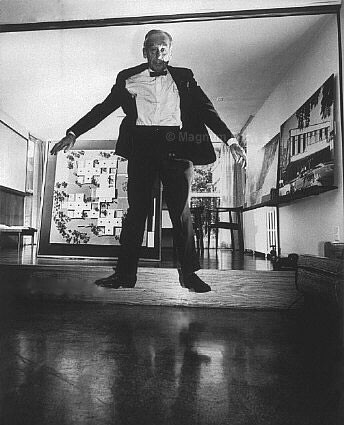

HUO: So art is a model for what we should try to do elsewhere…
AN: Yes! It’s the model of a totality that builds, that arrives at having this capacity to concentrate all the forces that are already there on one point… You see that it’s not this stupid idea of wanting to use aesthetics. It’s like the mouse that the cat chases—we are the cat and we run after the decision. And this connects to the question you posed earlier about the relationship between art and modes of production. This also involves a rapport between these two things. Now that we are within these singularities that rationalism produced, we have to find a way out—the construction of these places like Le Corbusier’s Ville Radieuse, and so forth, is no longer possible.
HUO: Yes, this old model of the “master plan” where the space for self-organization does not exist. But this question of the revolution becomes interesting. It’s a question that art students ask themselves a lot, and it bothers young artists too: one asks oneself whether there is still a space for resistance.
AN: Today the elements around which we can create points of reference—even points of resistance to the market—are the ones built on the land of the common. Because the common basically signifies that which costs nothing, that which is necessary, that which is participatory, that which is productive, and that which is free! And I believe that there are new use values already present in our common, and that these values can be easily spotted. Just think of the metropolis, where ninety percent of what we do are common things that cost us nothing—or at least could cost nothing if we made the effort to make them so…
HUO: Starting with the air…
AN: Air, of course, but water too. Generally, there are museums, libraries, cinemas, these are all things that cost money, but in ninety percent of the cases they do not generate direct profit, they are “free of charge.” This is becoming an increasingly fundamental element in what we call the “salary” or the “revenue” of citizenship. I don’t know whether the Left will win in Italy, but I know that half of the Italian regions have already established welfare programs with the intention of lowering the “universal revenues of citizenship.” It’s a process that has begun and needs to grow in scale. Our battleground has increasingly become concerned with the biopolitical reproduction of populations. All these “free” things are on offer in the metropolis because, fundamentally, it is the place where the multitude recognizes itself and starts to struggle. It starts to gain consciousness.
HUO: Which brings me to the notion of utopia. In Art et Multitude, I found a very interesting passage in a letter dated December 24, 1988, addressed to a certain “Silvano,” in which you discuss two equally illusory possibilities that constitute, according to you, the two dead ends in which an artist could find him- or herself. The first is that of utopia, and the second that of terrorism. You say that neither one of these two possibilities is sufficient, and that the only possibility for one who has traversed the “desert of abstraction” is that of “constituent power.” I would love to hear you speak more about this. You wrote this almost twenty years ago, and I wonder whether your point of view on the notion of utopia has stayed the same. Or has it has changed?
AN: You know, my book on constituent power became a “classic” in South America, whereas books like Empire receive far less attention, and are even opposed by the Left, which in South America is mainly composed of patriots who favor the idea of the nation state. What reaches them the most—and I’m speaking of people like Hugo Chavez or Evo Morales—is the constituent dimension of power, which I try to deal with in that book.2
HUO: And these are, in any case, the people you are in dialogue with, no?
AN: Yes. These are very important people in many respects. They are foreign to our own experience, to our own culture, and that makes it all the more important and more interesting to speak to them. This idea of spotting constitutive processes that span multitudes—which are not “masses” or “crowds,” but a complex articulation of a poor social fabric—is something that touches them enormously. Now that I’ve said this, I’ll go back to the question of utopia. Utopia is first and foremost an extremely realist thing. There is utopia when there is construction, or a revelation of the common. To follow up on what we’ve already discussed, an example would be to give the favelas’ inhabitants property rights over the land they already inhabit.
HUO: And these are very concrete actions.
AN: I became quite close with Gilberto Gil In Brazil after we met in the context of very concrete government projects trying to create open access to computers and the internet. It’s the same process, though it may not be immediately apparent. These communication networks are also a sort of favela.
HUO: A virtual favela!
AN: Yes, virtual! And an extremely important one. The other utopian domain is that which concerns how we can transform the redistribution of wealth into something active, a form of production. For example, both in Brazil and here, when you assume power, you immediately find yourself with wealth that you can redistribute. In Brazil or Venezuela, it’s the revenues from oil, but doing that does not create a new society—it’s simply handing out money! The problem with doing that is that it neglects other forms of cooperation that these funds could go towards. What are these forms? For rural communities, for example, such funds could allow for the establishment of literacy initiatives or stable and systematic medical assistance—things that already exist, but most often in backwards or marginalized ways. In Venezuela, for example, there are thirty thousand Cuban doctors who have been educated in Cuba’s medical schools, and they are some of the best doctors in the world. All the NGOs in the world go to Cuba to prepare themselves for anything involving tropical illnesses and other illnesses associated with these climates. All this is very important, of course, but what we still need here are places—if we implemented universities, hospitals, and cultural centers in these areas, if the value of people’s lives was placed directly into economic circulation, it would totally alter the equation. But this has been an irresolvable problem: how can the enormous investments that have taken the form of direct aid be translated into dynamics that are productive and transformative? I think it can be useful to compare the situation in Venezuela to the one in Iran.
HUO: In Iran?
AN: Yes. In Iran they continue to practice this form of redistribution that seems close to charity, while the same people remain in power. Because the priests stay priests, no matter what the religion! And as they are actually the patrons, there is no way for this to change. In Venezuela, it is not priests who are in power, though there is obviously an oligarchy that may perhaps get what it wants, namely for the United States to intervene and restore the previous order. But today, the enormous difference between Iran and Venezuela is that in Iran the mullahs have “the weapons and the money,” as Machiavelli said, whereas in Venezuela the people hold the weapons. This is not to say that the situation in Venezuela could not give rise to a new form of fascism or a particularly virulent populism, just that for the moment this is not the case and the institution remains open. The other thing is that in Iran, though the arms are held by those in power in order to uphold the revolution, the money is distributed without utopia. On the other hand, in Venezuela this is the decisive element—the money is full of utopia.
HUO: And if the money is “full of utopia,” and is, as we said, part of a concrete utopia, could we talk about a utopia that produces reality?
AN: Oh, yes! And also in relation to the production of subjectivity.
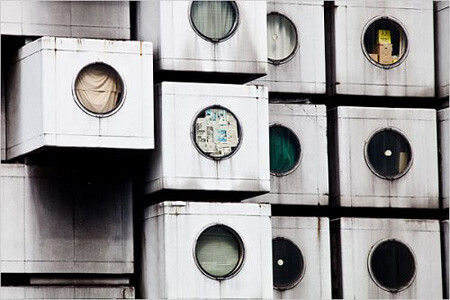

HUO: I would like to consider the question of groups and movements in which these utopias can be proposed. This year, we did an interesting project with Rem Koolhaas in which we tried to create a “portrait of a movement.” In the 1960s, there was a very important architectural movement in Japan called Metabolism, unique for having tried to establish a link between urbanism and biology—they wanted to create “metabolic cities” on the water…
AN: Metabolist organisms?
HUO: Yes, exactly. And so Rem Koolhaas and I found and interviewed each of the members of this movement and assembled accounts by critics, architects, industrial designers, and others, which together make up a sort of portrait of this movement, which we will publish as a book. The interesting thing is that even if they say that they were not exactly a coherent movement—there were never any concrete organized activities like those of Surrealism or Dada, for example, with manifestos, conditions for membership, or anything of the sort—the fact remains that there was a kind of pragmatic convergence of points of view that met spontaneously in a given moment. And meanwhile, we realize that in art or architecture today, movements have become very rare.
AN: But as you know, I’m neither an art historian nor an architectural historian! I don’t know what I could tell you about this…
HUO: Yes, but I think there is a certain link to your work. We talk often about Operaismo, and I would be curious to know how you see the movement that your work brings about, whether you imagine something organized and structured enough to express itself in a certain moment through a manifesto. Or is it something a bit more like Metabolism, based on a convergence of views that is more spontaneous and less concrete? And, just briefly, how do you see Operaismo today? I know that in his preface to Grammar of the Multitude, Sylvère Lotringer says that none of it would have been possible without Russia’s invasion of Hungary in 1956, and he mentions you and Mario Tronti as the originators of the movement, but I would love to have your personal viewpoint.
AN: Actually, we have to be careful about what we say with regard to “Operaismo,” because it was first and foremost a sort of political activism—but an activism conducted by intellectuals. It was intellectuals who, at the moment they became activists, began to produce.
HUO: Yes, they did both things at once.
AN: Yes, and it is exactly what we were in Italy, the generation of—how can I say this? Take the current editor of Corriere della Sera. Like many other individuals who work in the media, he comes from this generation of the rupture at the end of the 1950s and the beginning of the ‘60s. And Hungary was important for this generation, because it marked the moment of crisis for the Communist Party in Italy.
HUO: Lotringer later talks about 1961 as a very important year as well, but what happened between 1956 and 1961?
AN: There was Renato Panzieri, who was the secretary general of the Italian Socialist Party a little bit before that. When he left his post there he became editor in chief of Quaderni Rossi. He went to Turin, where we could say that he was essential to organizing the intervention groups at Fiat.
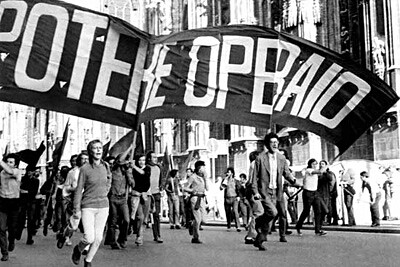

HUO: And that was in the late 1950s?
AN: Yes. Tronti was then the secretary of the Communist Party in Rome, and I was the secretary of the Socialist Federation in Padua. We found ourselves working with Panzieri at Quaderni Rossi, a journal aiming to revive political discourse with the question of the factories and the workers, shifting the struggle from the network between parties and syndicates to those who worked on the assembly line, also with an attempt to reveal the contradictions embedded in forms of struggle. At the time there was no sociology in Italy, and no sociology of the worker’s world in general. Sociology was one of the things that the Fascist Party had categorically rejected, and as a result there was no teaching of it, no Italian school of sociology. And we wanted to introduce both sociology and struggle at the same time; we needed the sociology in order to struggle. And the most amazing thing is that we succeeded! It was very impressive. I always return to the experience of the artist, because that’s what it was—to succeed in understanding the language of the workers, to make a leaflet and find that is has a direct effect on them, there was something miraculous about it—you cannot imagine! It wasn’t the creation of merchandise with a price, but the creation of a war machine that destroyed every notion of price! It was really impressive. I also remember that in 1963, my wife at the time and I spent the summer in a village where there were petrochemical factories employing thirty thousand workers, and there too we made leaflets and distributed them, and the workers announced: “tomorrow we will not work.” That was the very first time that the factory went on strike, they had never done it before.
HUO: That was the magic of beginnings, in a way.
AN: And I was convinced that it was impossible—I didn’t even wake up to go to the factory that morning! But my wife did, and she came back fifteen minutes later—we lived there with the workers about fifty meters away from the factory—to tell me that they were all outside. Impossible! I went to see it, and saw that everyone was afraid. It was their first time, and no one knew how the factory would react once it was left to its own devices. There were about thirty chimneys, and at one point, a real “atomic bomb” erupted…
HUO: An explosion!
AN: Yes, a dreadful explosion from the accumulation of all this gas that they did not evacuate. I remember it as if it were yesterday… it was dawn, six in the morning—that’s utopia!
Niccolò Machiavelli, History of Florence and of the Affairs of Italy (Middlesex: Echo Library, 2006), 97–98.
See Antonio Negri, Insurgencies: Constituent Power and the Modern State, trans. Maurizia Boscagli (Minneapolis: University of Minnesota Press, 1999).
Category
Subject
Translated from the French by Orit Gat.
